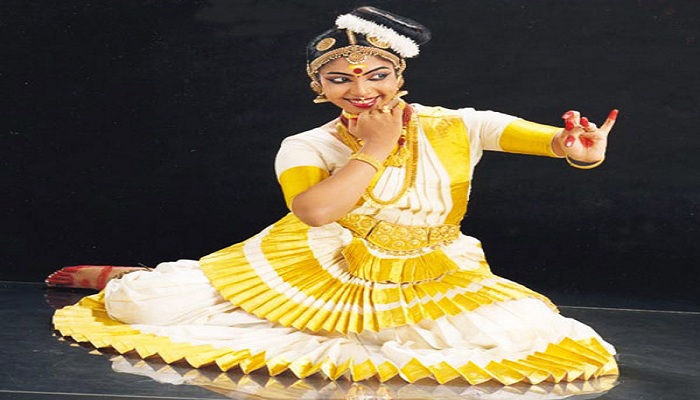
Kerala magnificently is famous for palm-lined beaches, its backwaters, its wildlife and cruises. The people here revere their dance forms as they revere Mahabali on whose head Lord Vishnu’s incarnation Vaman placed his foot on. Some of the folk dances like Kathakali and Mohiniyattam are recognized as classical dances.
Here is a list of 5 most popular folk dances of Kerala:
Kathakali

This vivacious dance-drama is filled with attractive colours combined with elegant motion of the body in synchronous with the music. Kathakali originated in the 17th century and is still popular and widely performed in various parts of the state.
The drama portrayed generally involves mythology.This drama depicted in dance is either adapted from the Mahabharatha or the Ramayana or the Puranas. Kathakali is one of the most noteworthy dance as people recognize Kerala and its art and culture through this folk dance.
This gracious dance involves five main elements-
Dance– movement of the body in accordance to the rhythm
Expression– to blend along with the song
Song– describes the character that is being performed
Instrument– that plays the tune to create suave motion
Enactment– depiction of the entire drama through dance and expression and mudras.
Padayani
This ritualistic dance is performed mainly in Bhadrakali Temples beginning from mid-December to mid-May. The word ‘Padayani’ means a row of soldiers.
The costumes in this dance are made of kolams or masks of various shapes and colours. The story behind this dance is to appease goddess Kali who had turned furious after Daruka, an asura’s death.
An astounding part of this type of dance is the music. Only a single type of instrument is used to relate to the song called the thappu. Written in its colloquial language, thappu has been carried for generations and is still prevailing in various parts of the state.
Kaikottikali or Thiruvathirakali
 Also known as Thiruvathirakali, this folk dance of Kerala is popularly performed during important occasions mainly during Onam and Thiruvathira. This is a symmetric group dance performed around a nilavilakku; the ceremonial lamp or the floral kolam during Onam.
Also known as Thiruvathirakali, this folk dance of Kerala is popularly performed during important occasions mainly during Onam and Thiruvathira. This is a symmetric group dance performed around a nilavilakku; the ceremonial lamp or the floral kolam during Onam.
Women generally perform this dance to attain eternal marital happiness. As Thiruvathira is the star of Lord Shiva, women sing chants and hymns to praise Lord Shiva in his eternal glory. The dance involves co-ordinated movements with clapping of hands. ‘Kai’ in Malayalam means hands and ‘kotti’ means clapping, thus the literal meaning is the hand-clapping dance.
The dancers adorn in the customary off white mundu with heavy jewels and gracefully demonstrate their elegance and co-ordination to appease the Lord and bestow them with marital bliss.
Mohiniyattam
One of the contemporary folk dances of Kerala involves a solo performance of the dancer- typically a woman who charms the crowd with her sensual and graceful movements. The dancers are clad in the traditional white mundu with gold border complete with glistening gold jewellery. In earlier days; this dance was performed in temples to thank the Lord for bestowing the wonders of nature.
The divine dance of Mohiniyattam revolves around many stories. One story revolves around Lord Vishnu when he took the form of a mohini– a beautiful woman and lured the asuras to give the pot of ambrosia- that keeps the Gods young forever. Another story specifies that Lord Vishnu’s mohini avatar gave birth to Lord Ayyappa.

The performance along with music from big and small drums, kombu and flute enthralls the audience and appeases the Gods.



Post Your Comments